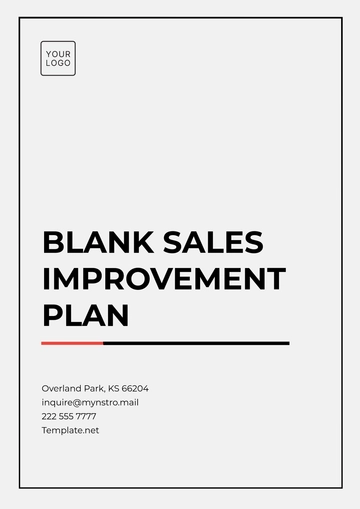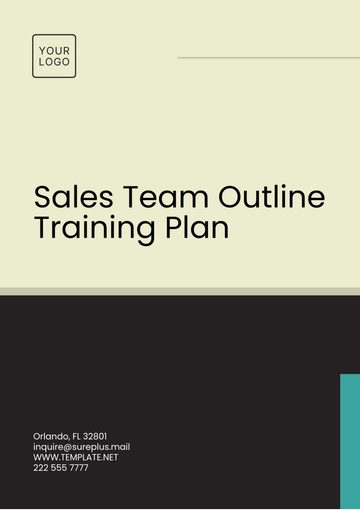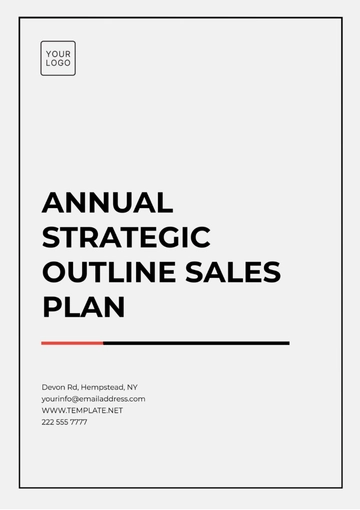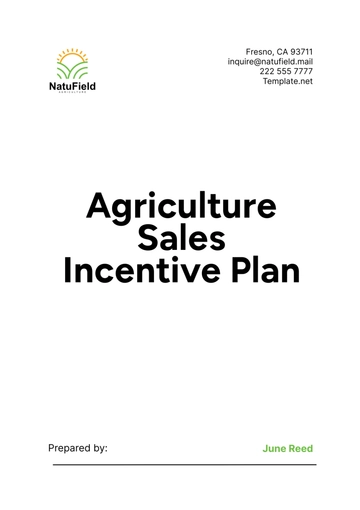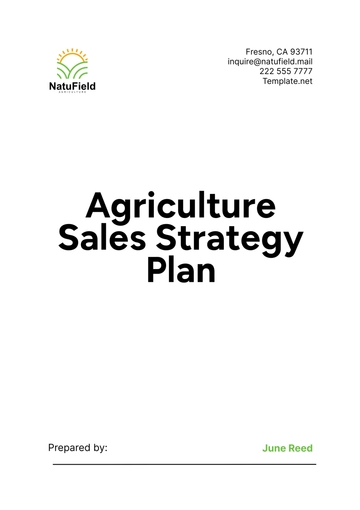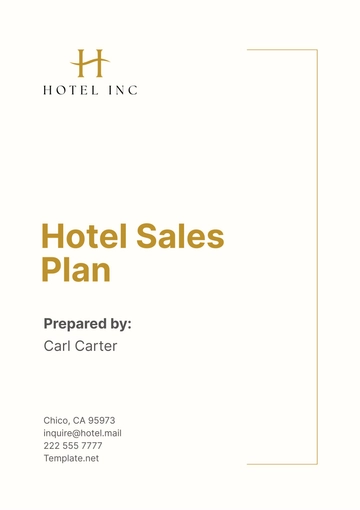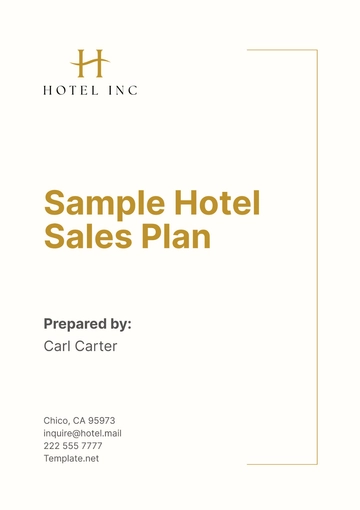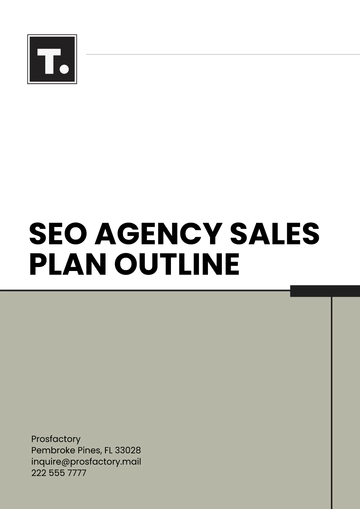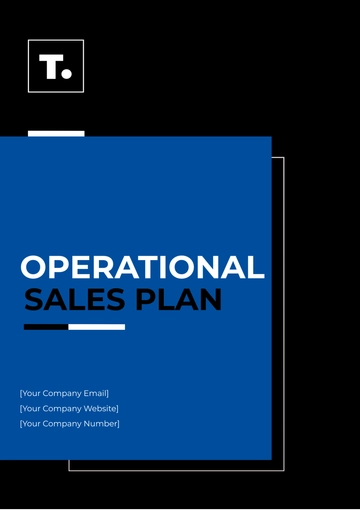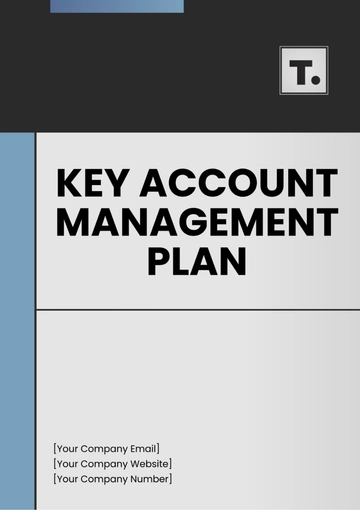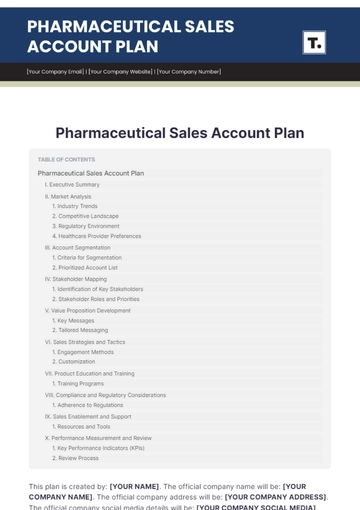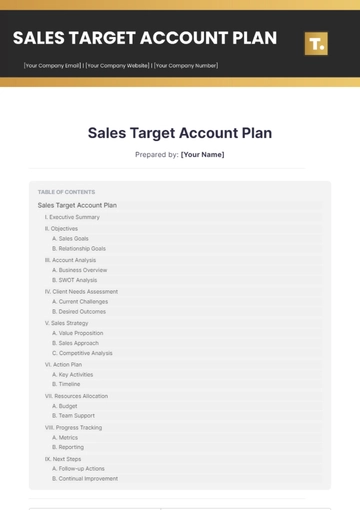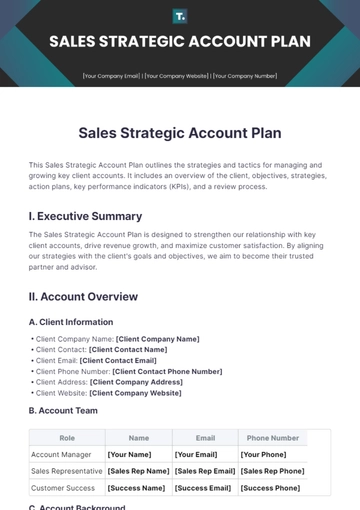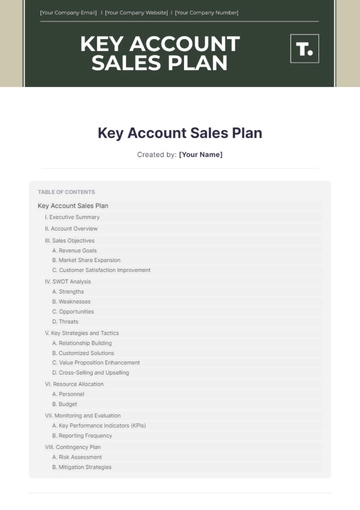Free Sales Opportunity Plan

Written by: [Your Name]
I. Opportunity Overview
Our company, [Your Company Name], has identified a lucrative opportunity to introduce a new line of eco-friendly household cleaning products targeting environmentally conscious millennials aged 25-40.
This demographic is increasingly concerned about sustainability and seeks products that align with their values.
Market research indicates a growing demand for eco-friendly alternatives in the household cleaning industry, with forecasts predicting a 20% annual growth rate in this segment by 2055.
II. Target Market Analysis
Millennials represent the largest consumer segment and are expected to drive significant purchasing power in the coming years.
Our target demographic values transparency, sustainability, and effectiveness in household cleaning products.
Through demographic analysis and consumer surveys, we have identified urban-dwelling millennials with disposable income as our primary target market.
III. Competitive Analysis
Competitor analysis reveals several established brands offering eco-friendly cleaning products, such as [Competitor 1 Name] and [Competitor 2 Name].
While these brands have strong market presence, our analysis indicates room for differentiation in terms of pricing, packaging, and product innovation.
By leveraging our commitment to sustainability and offering premium-quality products at competitive prices, we aim to carve out a distinct position in the market.
IV. Sales Strategy
The value proposition of our new product line lies in its combination of effectiveness, sustainability, and affordability.
The pricing strategy will be competitive, with a focus on offering value-added bundles and subscription options to incentivize repeat purchases.
Marketing efforts will highlight the environmental benefits of our products, emphasizing our commitment to reducing carbon footprint and promoting a healthier home environment.
V. Action Plan
Timeline | Activities |
|---|---|
June 2050 | Initiate product development phase. |
October 2050 | Finalize packaging design. |
January 2051 | Launch marketing campaign targeting key demographics. |
April 2051 | Commence product distribution through online channels and select retailers. |
September 2051 | Conduct a quarterly review of sales performance and marketing effectiveness. |
VI. Timeline
Timeline | Activities |
|---|---|
June 2050 | The product development phase begins. |
October 2050 | Finalize packaging design. |
January 2051 | Launch marketing campaign. |
April 2051 | Commence product distribution. |
September 2051 | Quarterly review of sales performance and marketing effectiveness. |
VII. Resource Allocation
$500,000 was allocated for product development and manufacturing.
$300,000 budgeted for marketing and advertising initiatives.
The sales team expanded by hiring three additional sales representatives to manage the new product line.
Production facilities upgraded to accommodate increased demand for eco-friendly products.
VIII. Conclusion
launching our new eco-friendly household cleaning product line presents a promising opportunity for [Your Company Name] to meet the growing demand for sustainable products among environmentally conscious millennials. By offering innovative, competitively priced solutions and implementing effective marketing strategies, we anticipate significant market penetration and revenue growth. With a focus on quality, sustainability, and customer satisfaction, we're poised to make a positive impact on the market while achieving our sales objectives.
- 100% Customizable, free editor
- Access 1 Million+ Templates, photo’s & graphics
- Download or share as a template
- Click and replace photos, graphics, text, backgrounds
- Resize, crop, AI write & more
- Access advanced editor
Introducing the Sales Opportunity Plan Template by Template.net, your strategic roadmap for seizing every sales opportunity. Fully editable and customizable, it provides a structured framework to identify, prioritize, and capitalize on potential sales prospects. Tailor the plan effortlessly to fit your business objectives, ensuring clarity and effectiveness. Streamline your sales approach and maximize revenue with this essential tool guiding your sales strategies.
You may also like
- Finance Plan
- Construction Plan
- Sales Plan
- Development Plan
- Career Plan
- Budget Plan
- HR Plan
- Education Plan
- Transition Plan
- Work Plan
- Training Plan
- Communication Plan
- Operation Plan
- Health And Safety Plan
- Strategy Plan
- Professional Development Plan
- Advertising Plan
- Risk Management Plan
- Restaurant Plan
- School Plan
- Nursing Home Patient Care Plan
- Nursing Care Plan
- Plan Event
- Startup Plan
- Social Media Plan
- Staffing Plan
- Annual Plan
- Content Plan
- Payment Plan
- Implementation Plan
- Hotel Plan
- Workout Plan
- Accounting Plan
- Campaign Plan
- Essay Plan
- 30 60 90 Day Plan
- Research Plan
- Recruitment Plan
- 90 Day Plan
- Quarterly Plan
- Emergency Plan
- 5 Year Plan
- Gym Plan
- Personal Plan
- IT and Software Plan
- Treatment Plan
- Real Estate Plan
- Law Firm Plan
- Healthcare Plan
- Improvement Plan
- Media Plan
- 5 Year Business Plan
- Learning Plan
- Marketing Campaign Plan
- Travel Agency Plan
- Cleaning Services Plan
- Interior Design Plan
- Performance Plan
- PR Plan
- Birth Plan
- Life Plan
- SEO Plan
- Disaster Recovery Plan
- Continuity Plan
- Launch Plan
- Legal Plan
- Behavior Plan
- Performance Improvement Plan
- Salon Plan
- Security Plan
- Security Management Plan
- Employee Development Plan
- Quality Plan
- Service Improvement Plan
- Growth Plan
- Incident Response Plan
- Basketball Plan
- Emergency Action Plan
- Product Launch Plan
- Spa Plan
- Employee Training Plan
- Data Analysis Plan
- Employee Action Plan
- Territory Plan
- Audit Plan
- Classroom Plan
- Activity Plan
- Parenting Plan
- Care Plan
- Project Execution Plan
- Exercise Plan
- Internship Plan
- Software Development Plan
- Continuous Improvement Plan
- Leave Plan
- 90 Day Sales Plan
- Advertising Agency Plan
- Employee Transition Plan
- Smart Action Plan
- Workplace Safety Plan
- Behavior Change Plan
- Contingency Plan
- Continuity of Operations Plan
- Health Plan
- Quality Control Plan
- Self Plan
- Sports Development Plan
- Change Management Plan
- Ecommerce Plan
- Personal Financial Plan
- Process Improvement Plan
- 30-60-90 Day Sales Plan
- Crisis Management Plan
- Engagement Plan
- Execution Plan
- Pandemic Plan
- Quality Assurance Plan
- Service Continuity Plan
- Agile Project Plan
- Fundraising Plan
- Job Transition Plan
- Asset Maintenance Plan
- Maintenance Plan
- Software Test Plan
- Staff Training and Development Plan
- 3 Year Plan
- Brand Activation Plan
- Release Plan
- Resource Plan
- Risk Mitigation Plan
- Teacher Plan
- 30 60 90 Day Plan for New Manager
- Food Safety Plan
- Food Truck Plan
- Hiring Plan
- Quality Management Plan
- Wellness Plan
- Behavior Intervention Plan
- Bonus Plan
- Investment Plan
- Maternity Leave Plan
- Pandemic Response Plan
- Succession Planning
- Coaching Plan
- Configuration Management Plan
- Remote Work Plan
- Self Care Plan
- Teaching Plan
- 100-Day Plan
- HACCP Plan
- Student Plan
- Sustainability Plan
- 30 60 90 Day Plan for Interview
- Access Plan
- Site Specific Safety Plan


